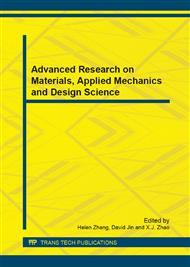p.294
p.301
p.306
p.310
p.314
p.318
p.325
p.329
p.333
Modeling Tension-Compression Asymmetry of Shape Memory Alloys Based on Finite Elastoplasticity Model
Abstract:
A combined hardening J2-flow elastoplasticity model is proposed to model tension-compression asymmetry of shape memory alloys in a direct sense. Results show excellent accord with test data for realistic pseudo-elastic behavior.
Info:
Periodical:
Pages:
314-317
Citation:
Online since:
June 2013
Authors:
Price:
Сopyright:
© 2013 Trans Tech Publications Ltd. All Rights Reserved
Share:
Citation:


